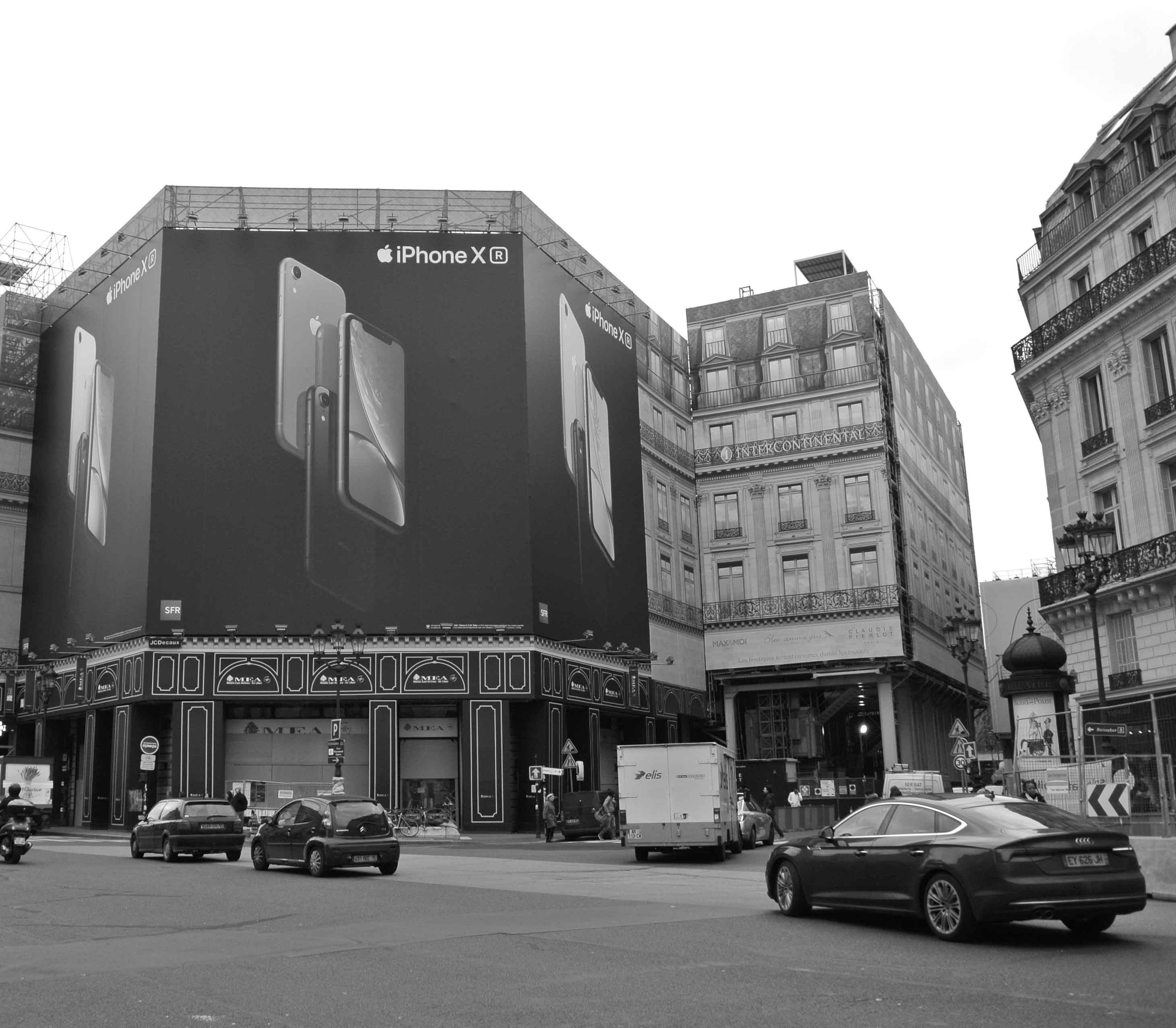Manufacturers of cameras and mobile phones are increasingly offering large-screen or large-sensor objects: from iphone XS Max to Nikon Z7. pierre j.
Apple advertising at Opera Paris
Compared to a 5" screen phone, large-screen phones can no longer be put in a pocket and require small screen watches connected for more convenience. These phones encroach on the market of iPads and have led to the disappearance of 7" tablet models.
This big smartphones are promoted by manufacturers because the consumer changes smartphone more often than tablet.
For cameras it's the same thing: 45 million pixel full-format hybrid cameras bring nothing new to the amateur and not much to the professional and it force to have high-performance, heavy and expensive lenses. This kind of camera is a dream but in practical life, a lighter device with APS-C or 4/3 sensor is just more effective. Fuji and Olympus have understood this and continue to sell simple, high-performance cameras.Fuji et Olympus l'ont bien compris et continue de vendre des appareils simples et performants.
Aki Murata, VP of sales and marketing for Olympus America has a clear speech:
"Full-frame is definitely a buzzword in the market, but maybe after carrying around full-frame lenses they’ll find they’re too big and give up! ... The risk for the photo industry is that people lose interest in traditional photography because their smartphone is so good. If the next step is big lenses and huge cameras, a lot of people might just give up and use their phones instead ... we won’t use any other mount other than Four Thirds."
A clear and full of common sense message.
02-06-2019